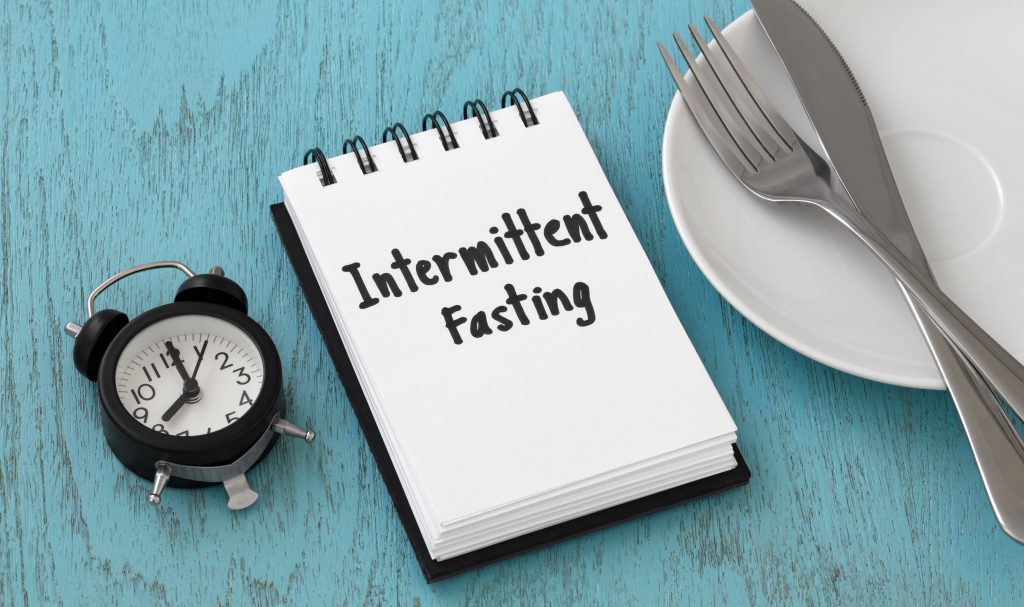There’s been a lot of talk about intermittent fasting. Many are full of praises for its health benefits such as weight loss, better cognitive function, and prolonged lifespan, to mention a few. But, if you’re new to the world of fasting, you might not be familiar with the safe practices to observe throughout the entire process.
Fortunately, here’s a comprehensive beginner’s guide to help you in your journey to intermittent fasting.

Stage 1: Stable Blood Sugar (8 to 12 hours)
Fasting for eight hours after a meal brings about a fall in your blood sugar level. As a result, you’ll start to experience fatigue, difficulty focusing, hunger, and food cravings. This is the most crucial stage in your fasting journey as these symptoms might be overwhelming.
But, if you manage to go for 12 hours without food, your body starts breaking down its stored glycogen. Because of this, your blood sugar levels will start to stabilize. This stage is the early onset of ketosis whereby your body doesn’t depend on carbohydrates for fuel. Instead, your body starts to get its energy from the fat reserves to keep you going.
During short-term fasting, your body’s insulin sensitivity levels might increase, and the blood sugar falls. This is why this kind of fasting is advised if you’re suffering from blood sugar control problems or type 2 diabetes.
Stage 2: Ketosis
The second stage of the 5 stages of intermittent fasting is ketosis. This stage entails the breakdown and burning of fats, referred to as ketosis, which starts to happen between 12 to 18 hours. You should expect to experience full ketosis between 16 to 18 hours after fasting.
During this point, your body starts creating ketone bodies that will now be provide energy to the brain cells, heart cells, and skeletal muscle cells. These ketone bodies are created from two amino acids: leucine and lysine.
At this stage, you’ll start to notice a few benefits, including;
- Fat loss: Now that your body isn’t getting its energy from burning food, it switches to burning fat to generate the much-needed energy. This is promoted by the fact that fasting stabilizes your body’s insulin levels, thereby preventing food cravings. It also lowers ghrelin levels, a hormone that promotes the need to eat more.
- Appetite suppression: The breakdown of the ketone bodies reduces your urge to eat more food.
- Improved mental clarity: Fasting boosts the levels of Brain-Derived Neurotrophic Factor (BDNF) in your body. This is a protein hormone that promotes learning, growth of new brain pathways, and safeguarding of the existing brain cells.

After an entire day of fasting, your body enters into a state of repair mode. At this point, it starts recycling destroyed or old cells. It also breaks down misfolded proteins that lead to conditions such as Alzheimer’s. It reduces inflammation too.
If you’re looking for an anti-aging solution, consider starting intermittent fasting. By doing so, the misfolded proteins and damaged cells will be removed from your body. This will play a vital role in ensuring you maintain looking younger while lowering the likelihood of neurodegenerative diseases caused by the reduced autograph.
At this stage, your body’s cells inspect each of their internal parts and remove anything defective or old.
Stage 4: Growth Hormone And Recovery (Between 36 t0 48 Hours)
Reduced proteins, carbs, or calories leads to a significant increase in the body’s growth hormones. This growth is realized thanks to the ketone bodies which promote the secretion of the growth hormone. Likewise, ghrelin, which is the hunger hormone, boosts growth hormone production.
During this period, your body also gets to experience faster muscle repair and improved muscle mass, thanks to the human growth hormone (HGH). The HGH also hastens the healing process.
Stage 5: Immune Cell Rejuvenation (72 Hours Plus)
The last stage during fasting is immune cell rejuvenation. This step kicks in after three whole days of not eating, and it involves the breaking down of the old immune cells which are replaced with new ones. However, 72 hours without food is quite long, and should you experience any unwanted symptoms such as light-headedness, you should immediately stop fasting.
To lower the chances of experiencing any of these adverse effects, ensure you’re drinking plenty of water. At the same time, get enough electrolytes such as potassium, magnesium, and sodium into your body.
Takeaway
If you’re striving toward healthy living, intermittent fasting is an excellent way to achieve your goal. While fasting is usually safe, it’s advisable always to consult your doctor before you start. Otherwise, for most people, intermittent fasting has no adverse impact.
This guide has offered you useful information on the steps to follow when fasting. With this in mind, you can determine whether this is something you’re open to trying out.



